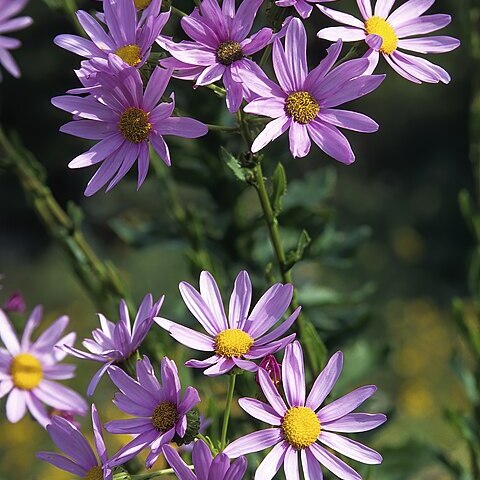Erect perennial to c. 1.5 m high, glabrous. Leaves oblanceolate to narrowly elliptic, to 12 cm long, with l:w ratio c. 2–4, lobate, with lobes antrorse; base hardly to moderately narrower; margin dentate or denticulate. Capitula few to numerous per stem; calycular bracteoles 10–16, 3–4 mm long, c. 0.8 mm wide; involucre c. 7 mm long, c. 5–8 mm diam.; bracts 20–22. Florets numerous; ligulate florets c. 13; ligule 10–20 mm long, 4-veined, pink to purple. Achenes narrowly obloid, 2–2.5 mm long, brown or olive-brown, with papillose hairs in narrow bands. Pappus caducous, c. 7 mm long.
Glabrous, perennial shrub or shrublet, up to 1 m high. Stems erect, rigid, densely leafy. Leaves sessile, leathery, ± clasping, oblong to lanceolate-oblong, up to 75 mm long, lower leaves ± decurrent, margins revolute, coarsely toothed. Inflorescence a corymbose panicle, corymbs 3-5-headed. Capitula radiate, disc yellow, rays (± 12) pink to purple; involucre broadly campanulate, flat-bottomed; bracts ± 20, up to 10 mm long; calyculus bracts many, up to 3 mm long. Flowering time Aug.-Dec. Cypselae cylindrical, 2.5 mm long, ribbed, ± hairy.
Rigid, glabrous, softly woody perennial to 1 m. Leaves lanceolate, coarsely toothed, margins revolute, ascending, clasping at base. Flower heads radiate, large, in lax, branched corymbs, yellow with mauve rays, involucres calycled.


